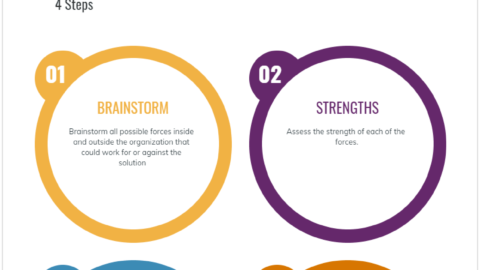Types of Stakeholders and Roles in Project Management
If you are new to project management, most probably you asked the following question; What is a stakeholder? and get confused about the answer. In general, the definition comprises the following; Stakeholders are people or organizations who are associated with a particular project and influenced by the outcomes of this project in a kind of way, and also they have an impact on the project’s objectives. Many categorizations can be made to classify different types of stakeholders and their roles in business, project management, healthcare, etc. In this article, we will talk about different types of stakeholders and their roles in project management to provide you a starting point to brainstorm all of the relevant parties involved in your business.
Table of Contents
What is a Stakeholder?
Imagine yourself as a project manager of a large construction project. This whole project will be managed by you and your team from the beginning to the handover of the project. You are signing contracts with various vendors, suppliers, and sub-contractors. You deal with people who have the potential to affect your project every day either internal or external. Moreover, you are spending money to assign team members and bring construction equipment when needed.
Now, the question is coming;
- Who actually performs all of the tasks here?
- Who is actually managing this business?
The answer is “you” of course, but not just “you”. A lot of people or organizations have personal or financial interests in your project, and those people/organizations are your project’s stakeholders.
Understanding Different Types of Stakeholders and Their Priorities
Whether they are internal or external to the organization, stakeholders are interested in the outcomes of the project and they may impact the success of your business. They may slow down processes or expedite tasks depending on how you deal with them. Therefore, as a project manager, if you are aware of the delta between their expectations and the requirements of your project, you will be most likely to complete your project successfully. The goal of this article is to analyze the most common types of stakeholders and discuss the requirements that each of them has.
Note that many professionals mistakenly think that stakeholders and shareholders are the same. However, they refer to two different concepts. Shareholders are people or groups that own at least one share of a company’s stock. In other words, shareholders can be defined as the owners in a company who expect to obtain the benefits of a business’s success. Stakeholders, on the other hand, a stakeholder is anyone who has any type of interest in a business or a project.
What are the Different Types of Stakeholders in Business and Project Management?
Typically, stakeholders can be classified according to their level of interest and involvement in the project/business. Each of them has different requirements and expectations. Therefore, developing a strategy do deal with each of them will be difficult, so grouping them according to their requirements, power, or influence will help you develop an effective strategy to manage your project’s stakeholders. In business and project management, common types of stakeholders can be categorized as follows;
- Internal / External
- Primary / Secondary
- Direct / Indirect
Internal stakeholders are those who are internal to the organization and the external stakeholders are individuals or groups who are external to the organization. For example, an employee is an internal stakeholder who can be affected directly by the project. A vendor is an example of an external stakeholder.
Primary stakeholders are those who directly affect or affected by the outcome. For that reason, they have the highest level of interest. On the other hand, secondary stakeholders have contributions to the project’s success but on a general level.
Direct stakeholders are involved in the daily activities directly within a project like workers. Indirect stakeholders are those who focus on the output of the project rather than the process of completing it. They often focus on pricing and availability like customers.
Below are common types of stakeholders in business and project management.
- Customers
- Employees
- Communities
- Owners
- Investors
- Creditors
- Suppliers
- Trade Unions
- Government Agencies
- Media
Let’s discuss common types of stakeholders and their roles in detail.
Customers
Customers are people or organizations who pay for the service or product. So, they are willing to buy the highest quality product/service at a fair price. Since a business doesn’t exist without customers, project managers and business owners should pay proper attention to their expectations.
Employees
Employees conduct business processes to produce a product or provide a service for customers. They undertake technical, managerial, and supervisory roles within the organization. They expect benefits like a better salary, social rights, career growth, and job satisfaction.
Communities
Communities can be important stakeholders, especially in large businesses and projects. They can impact projects or be impacted by a wide range of factors.
Investors
Investors include both stakeholders, shareholders, and owners. They focus on the financial returns of the project/organization. They have the right to participate in major financial and managerial decisions. Typically, an investor can be an external, primary, and direct stakeholder that can contribute ideas to improve and promote your business.
Suppliers
Suppliers and vendors are those who supply services and/or procure resources for the project. They are directly affected by the company’s operations. Suppliers are one of the most important types of stakeholders that you can work with during project management.
Owners
As the name suggests owners are owners of an organization. They supply funds to the project/organization to conduct business processes. They focus on the returns and outcomes of the project. Unlike investors, owners are internal stakeholders.
Creditors
Creditors are banks, suppliers, and bondholders who lend money to your projects/organization to support you to produce your product. You pay back to them by selling your products or services.
Trade Unions
Trade unions are membership-based organizations that are the legal representative for a unit of employees to secure them good working conditions, benefits through collective bargaining. From this aspect, they can affect your project’s or organization’s performance. They are external, secondary, and indirect stakeholders.
Government Agencies
Government agencies collect taxes from the company. From this aspect, they are external, secondary, and indirect stakeholders.
Media
In addition to the above list, media is an important stakeholder for an organization. Building strong media relationships is key to better brand recognition.
Conclusion
Stakeholders can also be classified as, Marketing, Technical, Sales, Executive, Internal, External, etc. Regardless of their title, you should be able to recognize how you can establish your stakeholder management style to deal with them to get their support for the success of your project. In this article, we discussed different types of stakeholders and their roles in project management. Share your approaches related to the topic with us through the comments section below.
See Also
Further Reading

Wanda is the Director of Blue Horizons Professional Training Services which focuses on the delivery of PMI-SP, Stakeholder Management and other project related workshops, training, mentoring and consulting services. She holds a Doctor of Project Management from Harward University.










Knowing the types of stakeholders are imporant because we need to know who are affected by our actions in a company.
Types of Stakeholders and Roles in Project Management is very important with so many reasons but most important is everyone have to know “what is their responsibility ?”.
Stakeholders play important roles in every step from the correct analysis of the project to its implementation.